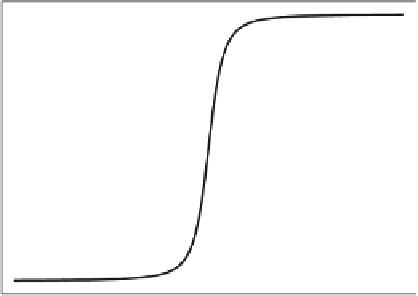Information Technology Reference
In-Depth Information
which results in the well-known nonlinear cell-to-cell response function shown
in Fig.
2
. Thus the ICHA carries with it extremely low computational complex-
ity, making it very desirable when solving large arrays of QCA cells. However,
while the ICHA is generally capable of arriving at the correct ground state of
an array of QCA cells in a single clocking zone with a fixed driver, it has been
shown that it does not always arrive at the correct ground state for many other
types of circuits [
40
,
41
]. Furthermore, the ICHA is not capable of predicting
the dynamic behavior of an array, as acknowledged in [
39
]. In order to calcu-
late the dynamic response, or finite-temperature behavior, of a QCA array, the
inclusion of the many-cell excited states is required. Thus, while the ICHA offers
a great deal of simplicity and low computational overhead, it represents, in a
sense, the minimum inclusion of quantum mechanical effects in that correlations
are completely ignored, except within the Hilbert space of each cell. It should
be noted however, that for such cases where the tunnelling rates are very slow
(
s), we witness a crossover from a regime where quantum tunnelling is
important to one where electrons are completely localized. The normal relax-
ation dynamics are suppressed because the system is strongly coupled to the
environment through
ʳ
z
, which has the effect of localizing charge [
46
]. In such
cases, the ICHA is capable of predicting the correct ground state of a QCA
system. However, in molecular and atomic implementations, it is likely that the
range of tunnelling rates that allows this crossover from quantum dynamics to
classical dynamics will not be achievable. For these reasons, it is useful to develop
other techniques if we aim to accurately model the time-dependance of many-cell
devices.
100
µ
1
0.5
0
-0.5
-1
-1
-0.5
0
0.5
1
Driver Cell Polarization
Fig. 2.
Nonlinear cell-to-cell response function. The output cell is almost completely
polarized for even a small polarization.








































Search WWH ::

Custom Search